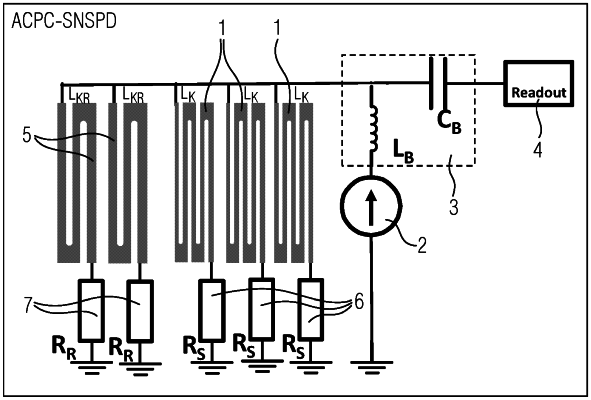| CPC G01J 1/4228 (2013.01) [H10N 60/30 (2023.02); H10N 60/84 (2023.02); G01J 2001/442 (2013.01)] | 18 Claims |

|
1. A device for single photon detection, the device comprising:
at least two superconducting detectors:
a bias current source′;
a filter element; and
a readout circuit;
wherein each superconducting detector forms a detection area adapted for absorption of incident photons and is connected in parallel to said bias current source and to said readout circuit by the intermediate of said filter element, each superconducting detector being maintained at a temperature below its critical temperature, said bias current source providing each superconducting detector with an electrical bias current situated below a critical current of the superconducting detector such as to normally maintain each superconducting detector in a non-resistive superconducting state, each superconducting detector being adapted to transition, in case of absorption of an incident photon, from said non-resistive superconducting state to a resistive state, and said readout circuit being adapted to sense a voltage change corresponding to said transition of the superconducting detector into its resistive state, such as to allow to create an event signal for each absorption of an incident photon by any of said at least two superconducting detectors,
wherein the device further comprises at least one current re-distributor adapted for at least partly redistributing current arising after absorption of incident photons by any of said superconducting detectors into said current re-distributor, such as to avoid any of the superconducting detectors not having absorbed an incident photon of having an increase in current density above its critical current.
|